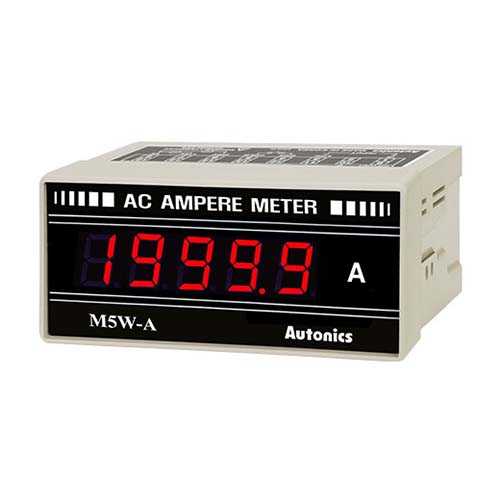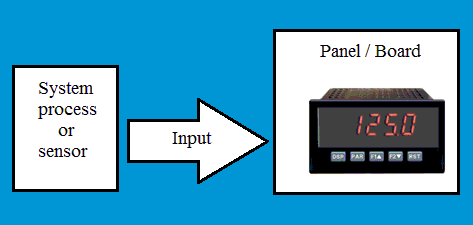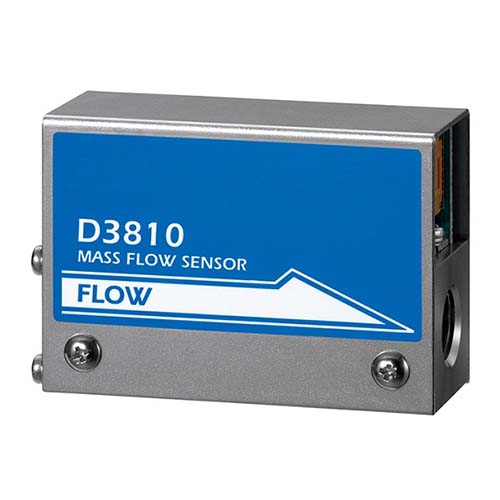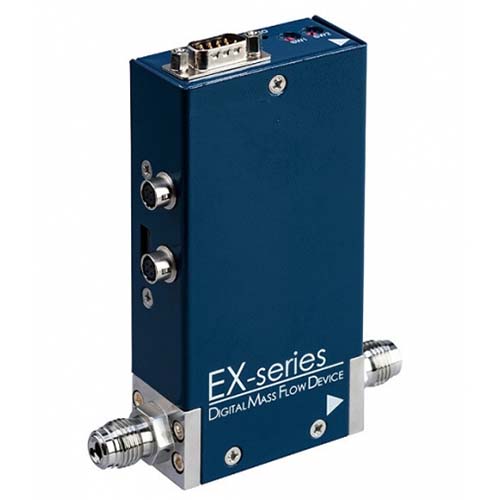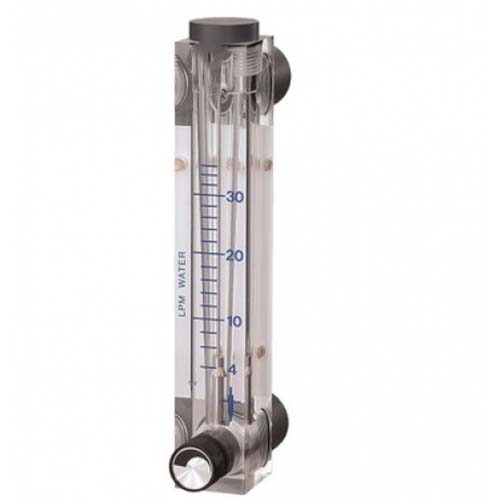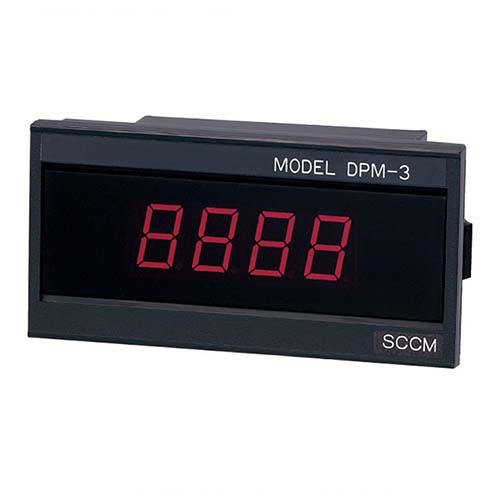FGT think your best choice in the future
System Integration Designers in FGT
Digital current panel meter model M4Y, M5W, M4W, M4M (ammeter) series
M4Y/M4W/M5W/M4M series digital current panel meter
Current can be measured in amps and displayed digitally.
All models are equipped with a 7-segment LED display that clearly shows the measured values.
The meter can display rms or AVG values depending on user preference (AC voltage).
Includes user-friendly features including auto-zero and display hold display (except M5W).
The meter is available in a variety of standard DIN size housings for easy installation.
M4Y/M4W/M5W/M4M series digital current panel meter
Current can be measured in amps and displayed digitally.
All models are equipped with a 7-segment LED display that clearly shows the measured values.
The meter can display rms or AVG values depending on user preference (AC voltage).
Includes user-friendly features including auto-zero and display hold display (except M5W).
The meter is available in a variety of standard DIN size housings for easy installation.
main feature
Maximum display value: 19999 (M5W), 1999 (all other models)
Auto-zero and display value hold function (except M5W)
RMS or AVG value selection (AC voltage)
7 segment LED display
DIN standard size model
Output Options: Indicator Only, Single Output, Dual Output
Digital Panel Meter Information
A digital panel meter is a digital display designed to be mounted in a panel, such as a control panel. They usually read some type of input, be it voltage, current, or resistance, and display its value digitally. Typically, this input is a measurement from a sensor, which is converted and displayed as temperature, pressure, or other system variable. These meters can also be used as trigger switches or simple controls to perform simple functions when readings reach preset measurements.
Function
To choose a digital panel meter, industrial buyers must first decide what they want to do.
Basic display output
The basic function performed by all digital panel meters is to take an input signal and convert it into a displayed value. Input initially comes from a sensor in the process or system and is sent to the device through a panel connected to the meter. The panel powers the device and provides input to the display.
Basic Digital Panel Meter
signal flow
Additional output
In addition to a simple display, some digital panel meters have optional control or interface functions.
Analog functionality means that a device can provide an analog output (such as a variable voltage or current) proportional to the input signal for use by an analog device.
The data interface function allows the user to interact with the displayed information for data analysis.
By default, the setpoint function allows the user to activate the input value of an alarm or a simple control function. These on/off functions correspond to solid state or electromechanical relay outputs, depending on the design.
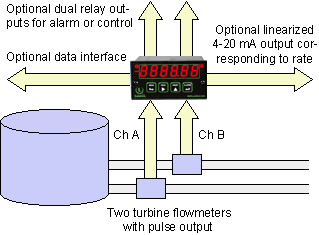
Flowchart – Dual channel capability with additional optional outputs. Image source: Laurel Electronics
Types of
Once buyers have determined the features they need, they also need to consider the actual meter type.
Digital panel meters are differentiated by type based on their display and lighting technology.
show
The display of digital panel meters is numeric or alphanumeric.
Digital display means that the meter only displays numbers. Most digital panel meters are digital because the main purpose of the meter is to display numerical values.
Alphanumeric display means that the meter displays both numbers and letters. This is useful to provide the user with more information, such as the appropriate channel or unit to read.
Technology

The lighting used in digital displays is LED or LCD.
LED (Light Emitting Diode) displays consist of diodes that illuminate each segment. The LED display can be seen in the dark.
 LCD (Liquid Crystal Display) technology displays dark/black numbers on a blank grey or green screen. LCDs consume less power than LEDs, but require a backlight to be seen in the dark.
LCD (Liquid Crystal Display) technology displays dark/black numbers on a blank grey or green screen. LCDs consume less power than LEDs, but require a backlight to be seen in the dark.
Signal input type
In order to function properly, a device must be designed to accept analog inputs sent to it. Input types include:
- AC Voltage – Input received as AC voltage in a measurable form in AC Voltage (VAC).
- AC Current – Inputs are received as measurable AC current in milliamps (mA AC) or amps (A AC).
- AC Power – Inputs are received as adjustable ranges of AC current, voltage and/or frequency.
- DC Voltage – Input is received in Volts Direct Current (VDC) as a measurable DC voltage.
- DC Current – Inputs are received as measurable DC current in milliamps (mA DC) or amps (A DC).
- DC Power – Inputs are received as adjustable ranges of DC current, voltage and/or frequency.
- Resistance – Inputs come from components that measure changes in resistance, such as piezoresistive sensors or strain gauges.
- Temperature – Receives input from thermocouples, RTDs or thermistors based on changes in temperature. For more information, see Temperature Sensor Area.
Specification
There are some important specifications to consider when choosing a digital panel meter, and these all relate to the display itself. These include the number of bits, the size of the panel face, and the display color.
number of digits
The number of digits determines how many digits are in the display output. This number should be less than or equal to the number of significant digits in the signal input, depending on the desired precision. In meters rated to display half digits (eg 4.5 digits, 2.5 digits), the first or last digit can only be "1" or off, or "5" or off. This "half" number allows the upper limit of the display to be extended (1 000 vs. _999) or the middle value to be displayed (100.5 vs. 100_).
size
The size of the panel surface determines the physical compatibility of the device with the panel on which it is installed. Typically, face dimensions are in inches (" or inches) or millimeters (mm), and are specified by length and width. Sometimes, you will need to consider the depth of the gauge and the size of the cutout, although most panels will accept standard depths with The size of the face is related, in addition, the display should be large enough for the user to read the numbers/letters comfortably when installed.
colour
Digital panel meters are designed to display certain colors. In LCD meters, the color is determined by the backlight behind the black numerals. In LED meters, the color depends on the type of diode built into the device. Color options include:
- Red
- green
- amber
- blue
- yellow
- Tangerine
- aquatic
Red is the default LED color, usually LCDs have no backlight (no color). There are a variety of color options, especially useful when using multiple monitors or channels. Setting colors for each monitor helps users quickly identify each monitor.
connect
Connections for digital display meters include electrical inputs and outputs as well as physical connections (such as screw connectors) required for safe mounting to the panel. These connections must comply with the design and regulations of the relevant panel.
feature
Digital panel meters may contain many features that provide additional functionality to the device. These include set point options, alarms, on/off controls and adjustable displays.
Setpoint options set control limits or setpoints for process parameters such as speed, temperature, pressure or humidity. In heating applications, the device sends a close control signal when the set point temperature is approaching or exceeded, and an open control signal when the temperature is below the set point.
Alarms (audible or visual) can be built into the gauge to indicate when a limit or set point has been reached.
On/Off control allows the meter to use relays, open collector transistors, or other techniques to send a switch output signal to activate or deactivate a processing unit (oven, motor, fan, etc.). Toggle, tap or limit control is one of the simplest process control techniques.
Adjustable displays allow the gauge to be adjusted to show different displays.
Additional channels allow digital panel meters to receive and interpret multiple signals from different sources.
The USB/Serial port allows the meter to connect to other devices, such as data analysis tools or computers, via a USB or serial connector.
| Control | DDC, IoT, MCU, PLC |
|---|---|
| Application | Panel Meter |
| Types of | Electronic |
| Output method | digital, switch, analog |
| Installation method | Panel Mounting |

